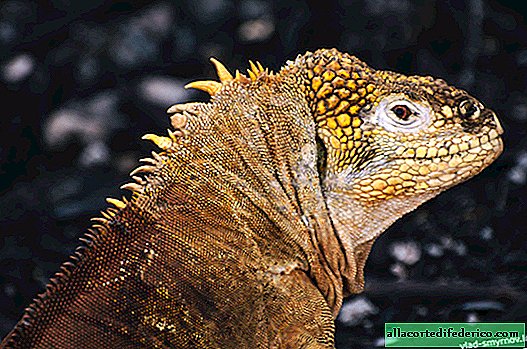A worm from the bottom of the ocean resembles Halloween festive tinsel
Nature creates truly amazing creatures. Sometimes they are beautiful, sometimes they cause horror and disgust in people. Some manage to combine both. As, for example, the 20-centimeter sea worm Eulagisca gigantea, which lives in the waters of the Southern Ocean near Antarctica. Its oval body is covered with shiny golden bristles, and this makes the worm look like a festive tinsel. Unless, of course, the tinsel has a creepy popping goiter with sharp teeth.
Three in one bristles
Eulagisca gigantea belongs to a class of marine worms called polychaetes, also known as bristle worms (their name in Latin means "many bristles"). Worms use these bristles in different ways: for swimming, movement along the ocean floor and even protection.

This strange "holiday" worm was first discovered in 1939, but little is still known about its biology and lifestyle. What resembles a “head” in photographs is actually a unfolding pharynx, which is usually located inside the body of the worm, like other polychaete sea worms. This part of his throat extends outward to 5 centimeters. Sharp teeth hint that the worm uses them for hunting, or eats up the remains of dead living creatures.
Deep sea teller
In general, polychaete worms are represented by many species of various sizes and colors; they live in a variety of places - from extreme environments, such as hydrothermal vents, to shallow bays and coral reefs. To date, scientists have described 80 families and 8000 species of polychaete worms, but, according to researchers, there can be many more.

A recent DNA study showed that there could be twice as many marine worms in the oceans as previously thought. Of course, at first glance they seem strange and even creepy, but worms play an important role in oceanic ecosystems. And they can also tell scientists a lot about understanding life in the deep ocean.
Based on materials from LiveScience.com

















